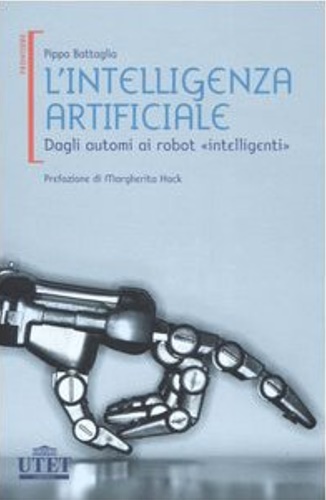 Battaglia,Pippo.
L' intelligenza artificiale. Dagli automi ai robot «intelligenti»
Battaglia,Pippo.
L' intelligenza artificiale. Dagli automi ai robot «intelligenti»
Torino, UTET
2006,
cm. 15x23,
pp.IX,207,
brossura con bandelle e copertina figurata a colori.
Coll.Frontiere.
Risale al paleolitico superiore l'idea di costruire dei marchingegni che sapessero simulare in maniera del tutto autonoma i movimenti degli esseri viventi e la realizzazione di primitive bambole, con braccia mobili, fu uno dei primi successi nell'arte di progettare e costruire marchingegni semoventi. Un maestro in questa disciplina si dimostrò Archimede che costruì delle macchine tanto complesse da permettere a Siracusa di resistere all'assedio dei romani per due anni. Lo scopo di realizzare un automa ad litteram esercitò un forte richiamo nella comunità scientifica di quei secoli; richiamo a cui non sfuggì neanche Leonardo. Anche Cartesio e La Mettrie utilizzarono il concetto di automa nella loro filosofia secondo la quale il progetto di realizzare un automa faceva divenire gli uomini simili agli dei anche se non prevedeva, inizialmente, che un automa fosse necessariamente intelligente. Infatti sino agli inizi del XX Secolo non si pensava agli automi come esseri artificiali intelligenti. Fu la letteratura fantastica a introdurre l'idea di poter fabbricare esseri senzienti artificiali, che Kapek chiamò robot in un sua opera teatrale del 1920. Trent'anni dopo Alan Turing pubblicò un articolo in cui si chiese: le macchine possono pensare? Sulla base di quella domanda si originò una nuova disciplina di cui oggi esistono due ambiti di ricerca: la robotica e l'intelligenza artificiale. La storia suggestiva di questo progetto scientifico, che ha inizio agli albori dell'umanità, è descritta nel volume.
EAN:
9788802072609
Nuovo